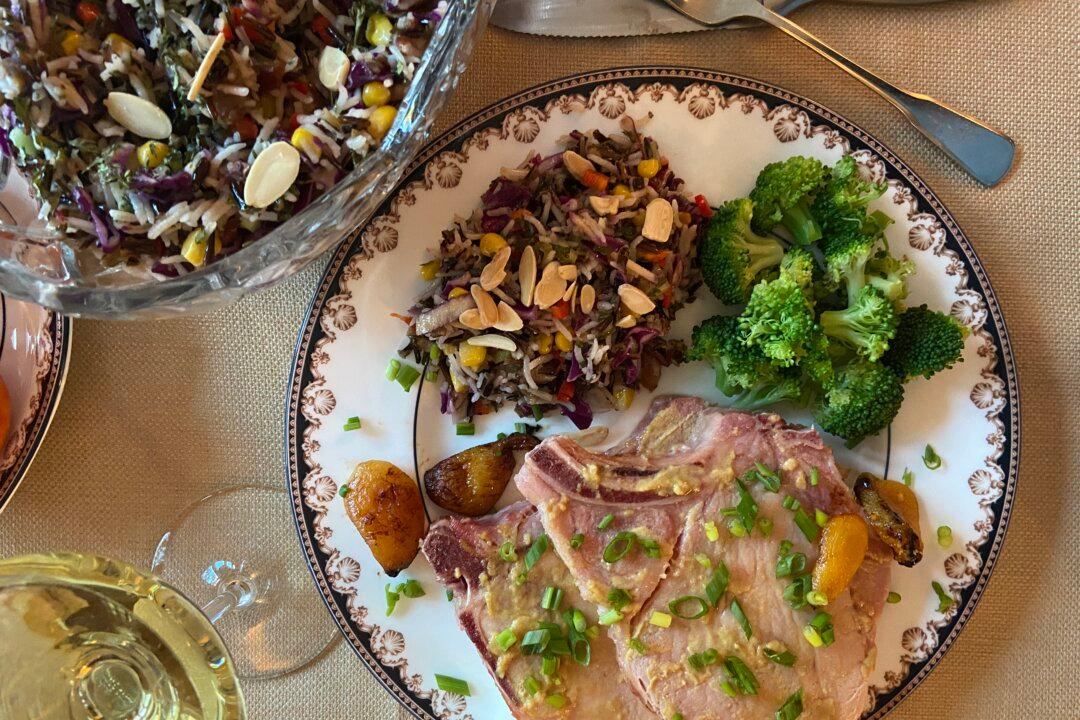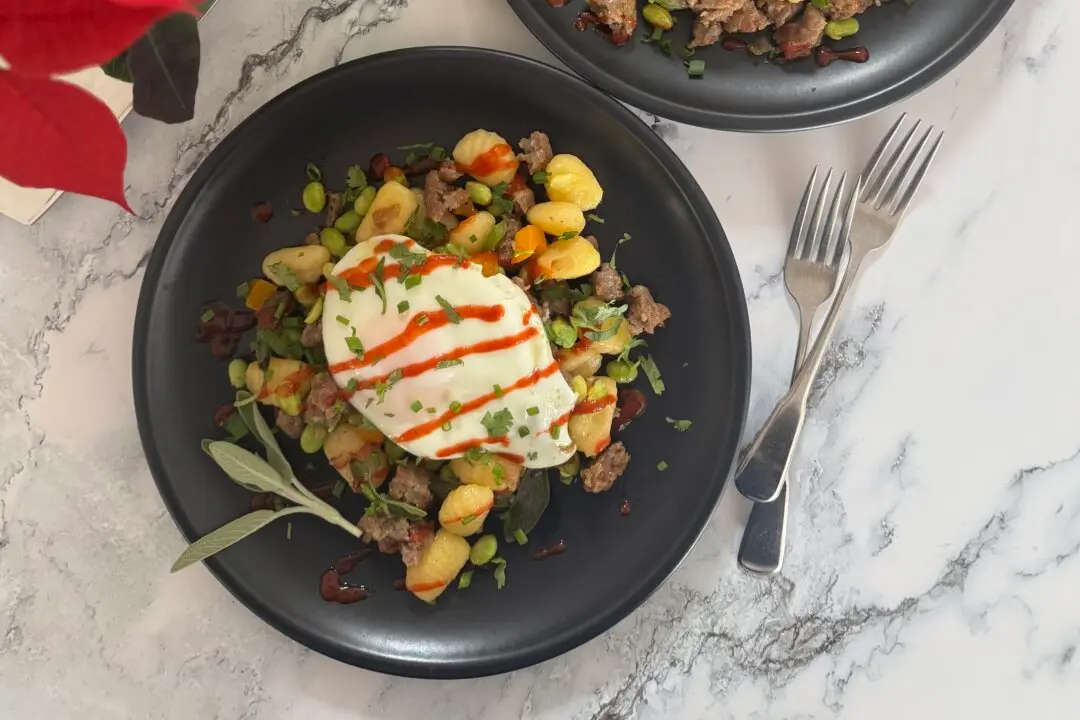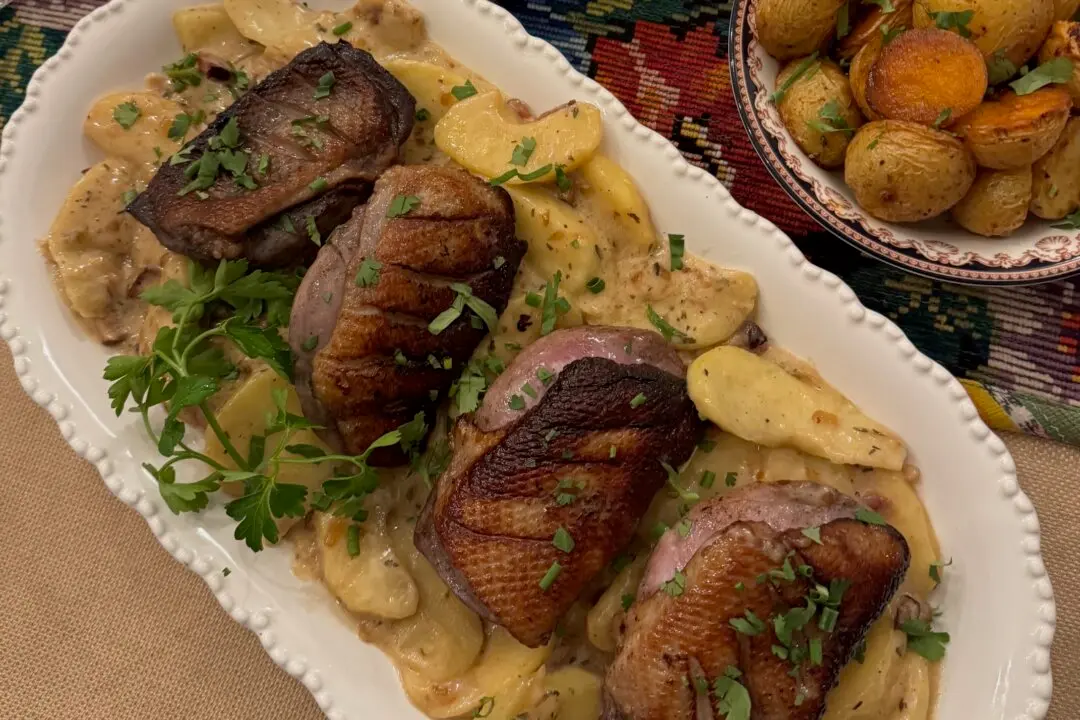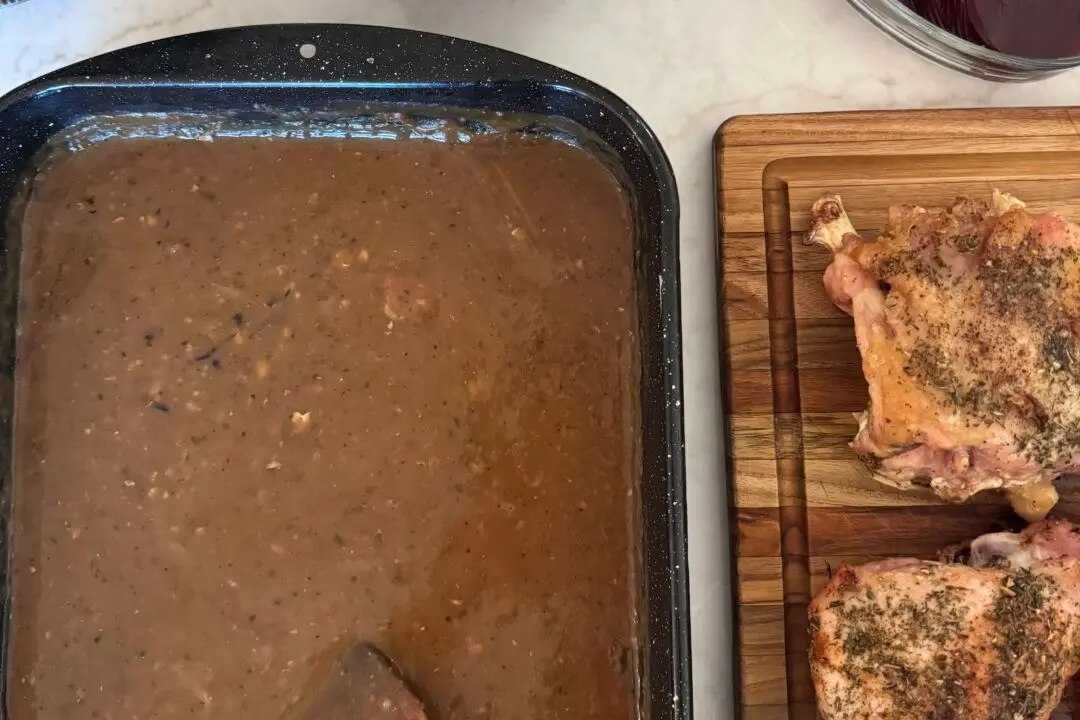Flexibility. One of a cook’s most important skills. That especially rings true during this post-pandemic holiday season. At a moment’s notice, the guest list might shrink or expand. Given that fact, this might not be the year to cook a huge Christmas roast. Instead, we opt for individual cuts of meat and poultry so it’s easy to customize to a specific number of guests.
Same for starters and side dishes; I chose recipes that can easily be doubled. Soup, for example, can expand fairly easily. Select dishes that make tasty leftovers—either to enjoy ourselves or to send home with guests.
Smoked pork chops have several advantages over roast ham—they heat faster and are individually portioned. Look for 3/4- to 1-inch thick bone-in smoked chops in large supermarkets or order kassler rippchen, German-style smoked chops, from a local butcher or specialty grocer. Online, New Braunfels Smokehouse sells hickory-smoked chops and Nueske’s sells applewood-smoked chops. Plan on one or two chops per serving.
Fully cooked, the smoked chops need only brief heating in a modest oven to prevent dryness. A Dijon mustard smear adds brininess, while a slightly sweet liquid added to the roasting pan balances the chop’s smoke. Briefly boil the pan juices after the chops are warm for an “au jus” to moisten the chops just before serving.
The wild rice and red cabbage dish that follows doubles easily for a larger crowd. The addition of warm cooked basmati, brown, or white rice makes a nice textural combination with the nutty wild rice. Cook the wild rice ahead of time and reheat before assembling with the vegetables and dressing.
Start the Christmas meal with a potful of store-bought butternut squash soup, purchasing extra just in case. Jazz up the soup bowl with garlicky croutons, a dollop of sour cream, and a sprinkle of chopped fresh cilantro. Serve a bright green vegetable, such as blanched broccoli florets, to add color to the plate.
Smoked Pork Chops With Glazed Apricots
Makes 4 to 6 servings





